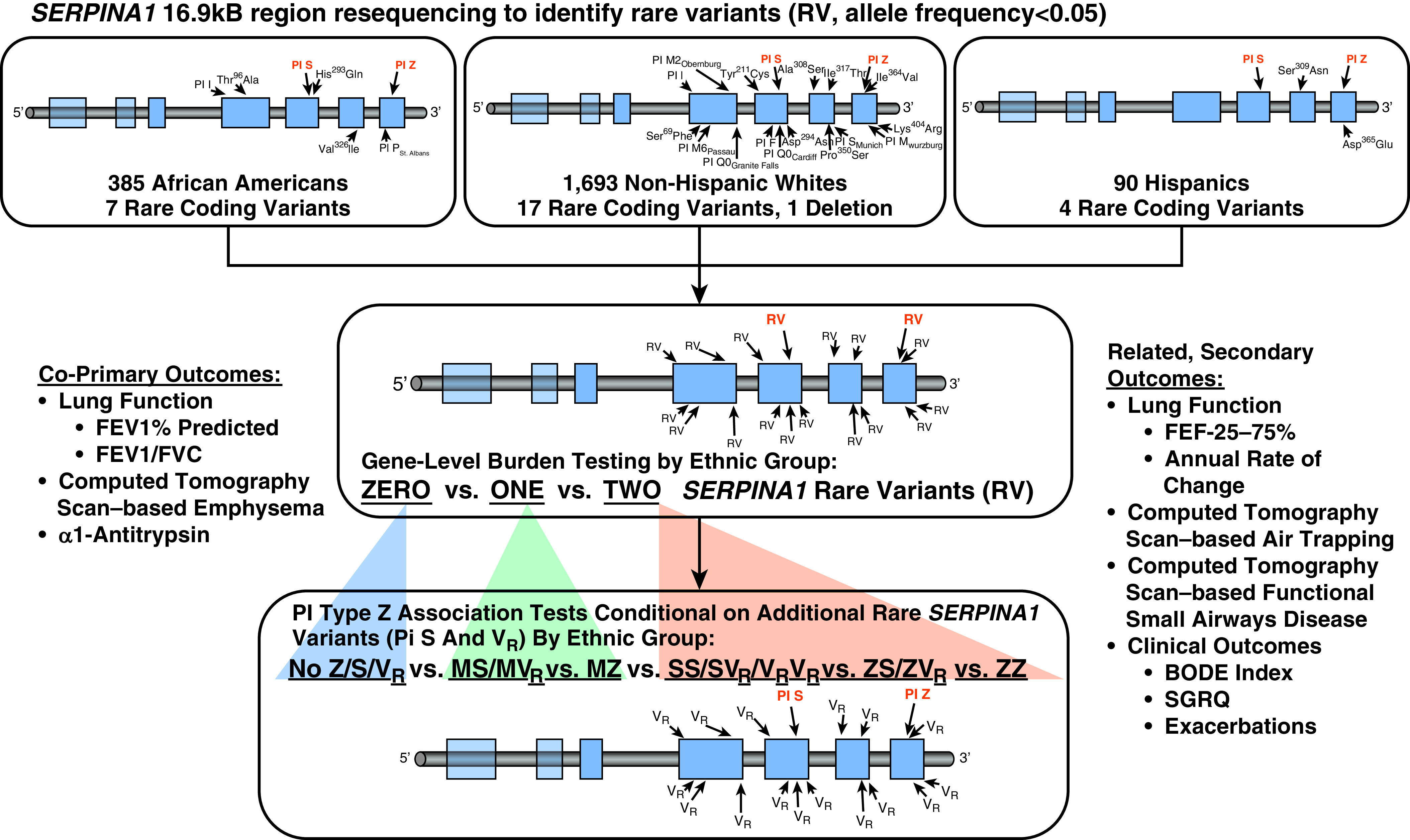Figure 1.

SERPINA1 genetic study flow diagram summarizes the sequential analytical steps for characterizing rare SERPINA1 variants in SPIROMICS. First, burden tests for PIs (protease inhibitors) Z, S, and 21 additional rare exonic coding variants and 1 frameshift insertion, all with a minor allele frequency of less than 0.05, were performed by self-reported ethnic group to evaluate for gene-level associations with the co–primary outcomes (30). Second, individual rare variants were analyzed with regression-based allelic association tests to further evaluate significant associations. Based on the strong effect of PI type Z variant on the co–primary outcomes in white individuals, we performed association testing of this variant conditional on additional less common (PI S) and rare SERPINA1 variants. We compared white individuals without a PI Z, S, or additional rare variant allele (no Z/S/VR, where VR designates all non-Z and non-S rare variants), heterozygotes for non–PI Z rare variation (MS/MVR), PI Z heterozygotes without another rare variant (MZ), compound heterozygotes with non–PI Z rare variation (SS/SVR/VRVR), PI Z–containing compound heterozygotes with PI S or additional rare variants (ZS/ZVR), and PI Z homozygotes (ZZ) to evaluate the effects of PI Z heterozygotes with the confirmed absence of other rare variants and PI Z in compound heterozygotes with another rare variant. We performed similar analyses for secondary related outcomes. BODE = body mass index, airflow obstruction, dyspnea, and exercise; FEF25–75 = forced expiratory flow, midexpiratory phase; SGRQ = St. George’s Respiratory Questionnaire; SPIROMICS = Subpopulations and Intermediate Outcomes Measures in Chronic Obstructive Pulmonary Disease Study.
